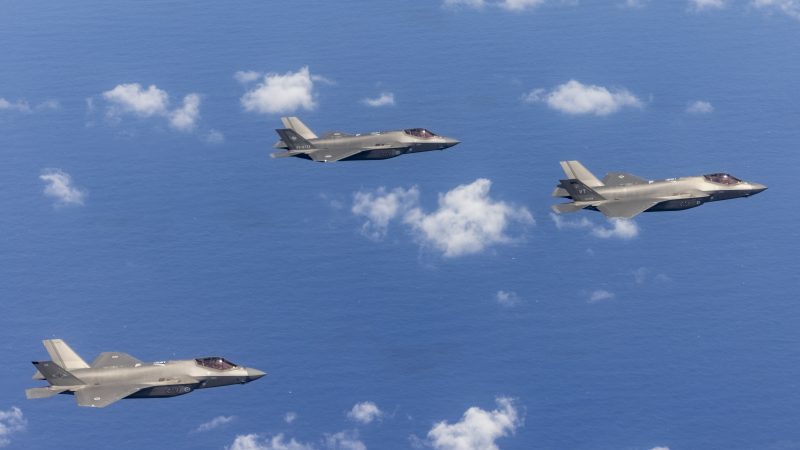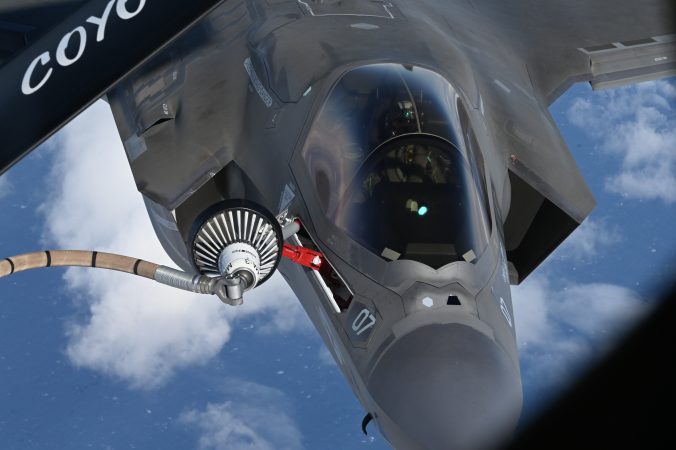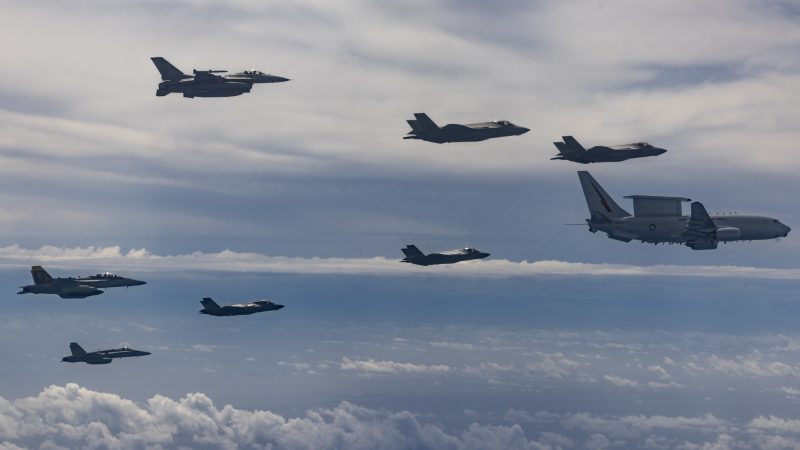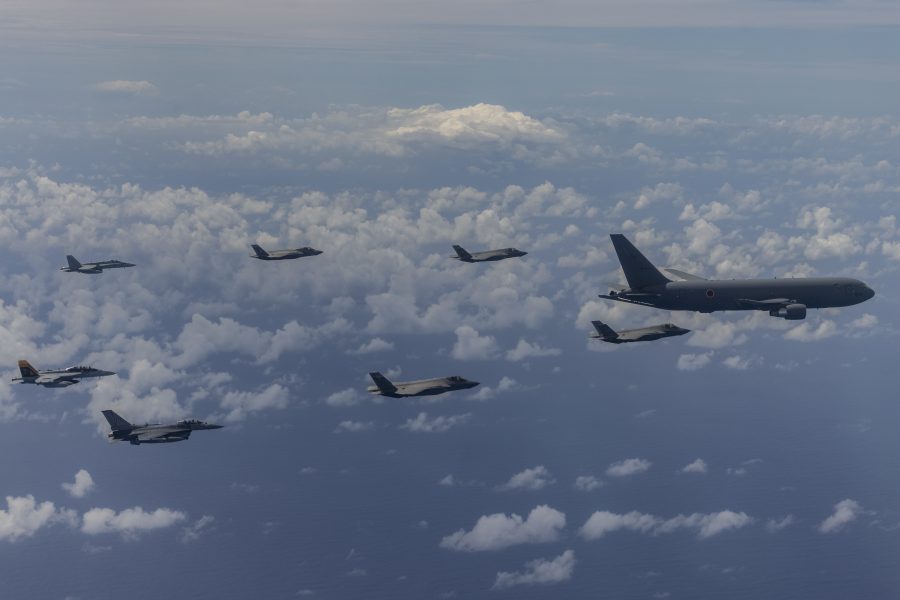F-35s from the United States, Australia, and Japan are all soaring above Andersen Air Force Base in Guam as part of Pacific Air Forces’ largest annual multilateral exercise.
Cope North kicked off Feb. 3 and runs through Feb. 21, drawing more than 2,300 U.S. personnel, a PACAF spokesperson told Air & Space Forces Magazine.
A total of 62 U.S. aircraft are involved in the exercise, spanning across the Air Force, Marine Corps, and Navy. These include a mix of F-35A, F-35B, F-16, and F/A-18C/D fighters; EA-18 Growlers, E-11 and E-3 command and control aircraft; KC-46, KC-135, and KC-130J tankers; C-130J transport aircraft; and MH-60S helicopters, the spokesperson added.

The exercise focuses on blending air tactics, techniques, and procedures to ensure smooth collaboration for “deterring conflict and achieving regional security.”
While last year’s iteration saw fighters and electronic warfare aircraft escorting a B-52 bomber, the focus for this year has shifted to integrating the three nations’ fifth-generation fighters.
“The reason that fifth-generation is so important is that fifth-generation fighters are the forward edge of our fighting force, especially in the Indo-Pacific, so it’s important to practice together with all the nations that fly them,” said U.S. Air Force Col. Charles Schuck, commander of the 3rd wing, in a release.
The Royal Australian Air Force is contributing 275 personnel, eight F-35As, a KC-30A multirole tanker transport, and an E-7A Wedgetail airborne early warning and control aircraft to the exercise.
The Japan Air Self-Defense Force (JASDF) is represented by six F-35As, two E-2D early warning and control aircraft, and a KC-46 refueling tanker, along with some 250 personnel.

“When you have many different nations flying the same aircraft, it’s important to train together so that we learn small differences between how each nation employs, maintains, and commands and controls those airplanes,” said Schuck. “We’ll never learn those differences without actually exercising together.”
This marks the first joint F-35 exercise under an agreement reached last year following a trilateral defense summit in May. The three nations have agreed to take turns hosting joint F-35 exercises, with Cope North kicking off in the U.S., followed by Bushido Guardian in Japan this year and Pitch Black in Australia in 2026.
“Exercise Cope North [25] will be the showcase for the true integration of fifth-gen capability,” said RAAF Contingent Commander Group Capt. Darryl Porter. “Australia has participated in Exercise Cope North since 2011, and coming to Guam provides valuable training experience for aviators deploying into the Indo-Pacific region.”
The RAAF has already purchased 72 F-35As for three squadrons, with the final nine jets delivered in December. Japan, meanwhile, has ordered 105 F-35As and up to 42 F-35Bs, with the order placed in 2022.

The agreement between former U.S. Secretary of Defense Lloyd J. Austin III and his Australian and Japanese counterparts is part of a broader push to ramp up the frequency and complexity of joint training amid rising tensions in the Indo-Pacific.
The three countries plan to boost intelligence-sharing and jointly invest in developing new technologies, including Collaborative Combat Aircraft (CCA) drones. They also plan to hold the first-ever combined live-fire air-and-missile exercise in 2027 and aim to build a joint air defense system to tackle growing air and missile threats in the region.
Originally a quarterly bilateral exercise at Misawa Air Base in 1978, Cope North moved to Andersen in 1999 and became trilateral in 2012 with the RAAF’s inclusion.
